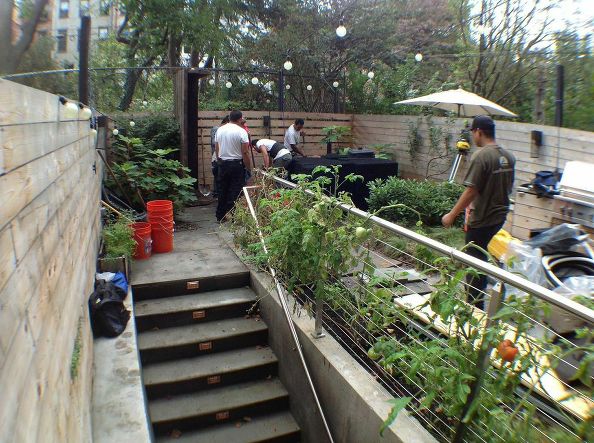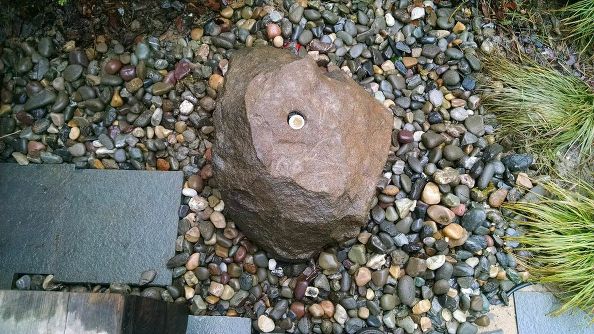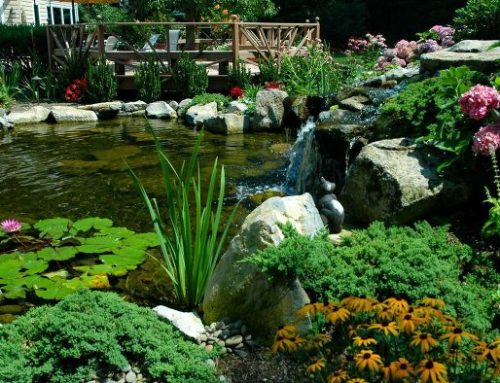Update 4/6/23: As you will see in our original blog below, Deck and Patio is known in the New York Metro-Long Island area for our expertise in rainwater harvesting–be it to replenish lovely, peaceful water features, for garden irrigation or for other non-digestible yard use. And we are glad to see that state governments are strongly encouraging this earth-friendly process.
Although the Northeast doesn’t suffer too many droughts, there are other good reasons for capturing rainwater. New York’s and Massachusetts’ “free rain barrel” programs, for example, explain in detail that collecting rainwater saves local water systems from many ill effects.
“Not to mention, the cost of water keeps rising,” says our own Dave Stockwell “Capturing rainwater saves money and is a real help to Long Islanders by reducing the amount of pollutants that end up in our precious harbors and waterways.”
Actually, the rainwater itself is “soft” and free from minerals. But when it runs across pavements, etc., it picks up pollutants that end up in our local water systems.
Residents are encouraged to use captured rainwater for such outdoor tasks as lawn and garden irrigation. It can also be used for washing vehicles and other non-digestible water uses.
“We particularly love capturing rainwater in order to replenish the many types of water features we install. Rainwater harvesting is becoming more and more essential to a healthy earth.”
With Earth Day 2023 coming up on Saturday, April 22nd, it’s a perfect time to pause and count the raindrops. Our original blog below showcases a rainwater harvesting project we did on a small property in Brooklyn. For more projects, simply search “Rainwater Harvesting” on this site. Enjoy.
_________________________________________
Next Wednesday (April 22nd) is not only Earth Day, but it’s the Day’s 50th anniversary. To mark this year’s event, NASA says it’s taking the adage “Make the World a Better Place” seriously by using technology over in-person activities. Their website will host at-home science activities, videos from earth and space, social media engagement etc.
If you’re asking what can we do locally in each community to contribute, we have a thought. Here at Deck and Patio we have a division called Rainwater Harvesting. If using less local water is something you find you’d like to do, you’ll be happy to learn that harvested rainwater can be used for washing your car, watering your garden and lawn, etc. You can get in touch with us to begin planning such a change.
Do You Need a Large Property to Harvest Rainwater?
A few years ago, long before COVID-19, The Deck and Patio Company — through our Rainwater Harvesting Group — did just such a project in Brooklyn, New York. Certainly these clients had a very tight city backyard. It was barely 25’x 12’.
“The clients had a four-story walk-up,” adds Dave Stockwell. “They wanted us to help them collect all the water that came off their roof.”
In addition to the obvious “green” aspects, the clients were keen to take advantage of certification from the U.S. Green Building Council’s LEED (Leadership in Energy & Environmental Design) program.
According to the Council, certification may allow property owners to “qualify for a host of incentives like tax rebates and zoning allowances. Not to mention they retain higher property values.”
In addition, says Dave, rainwater harvesting reduces energy and water bills, sometimes by as much as 40%.
The following photos and video show The Deck and Patio Company hard at work awhile back (in the good old days) at this Brooklyn project. As you’ll see, we are happy to go the extra mile no matter how tight or challenging a property site turns out to be.
In addition to the the Rainwater Harvesting System by Aquascape Inc, these clients wanted a small built-in barbecue; they also had a vegetable garden and we planted drought-tolerant xeriscape plants across from it.
Our team was hard at work here prepping a large enough hole to install an adequate tank. Water comes off their Brooklyn 4-story roof and is collected in a 500-gallon underground rainwater harvesting reservoir. When it’s full, water flows into an overflow regeneration zone where it can perk slowly back into the ground.
Previously, any excess water from rainfalls etc. ran off into the New York City sewer system; now, because rainwater and any overflow will be collected, stored, and controlled, the water for plants and vegetables is completely disconnected from the city sewer system.
We had to dig a hole 4’ x 6’ and 3’ deep to install the underground 500-gallon reservoir. This required digging out soil and filling 5-gallon buckets that our team carried one at a time down to the basement, up stairs, and out to a dump truck in front of the house.
We drilled a hole through a rock to create a bubbling rock feature; water bubbles up and then goes back down; having a connecting water feature allows the water to be continually aerated, thereby helping to purify the water.












